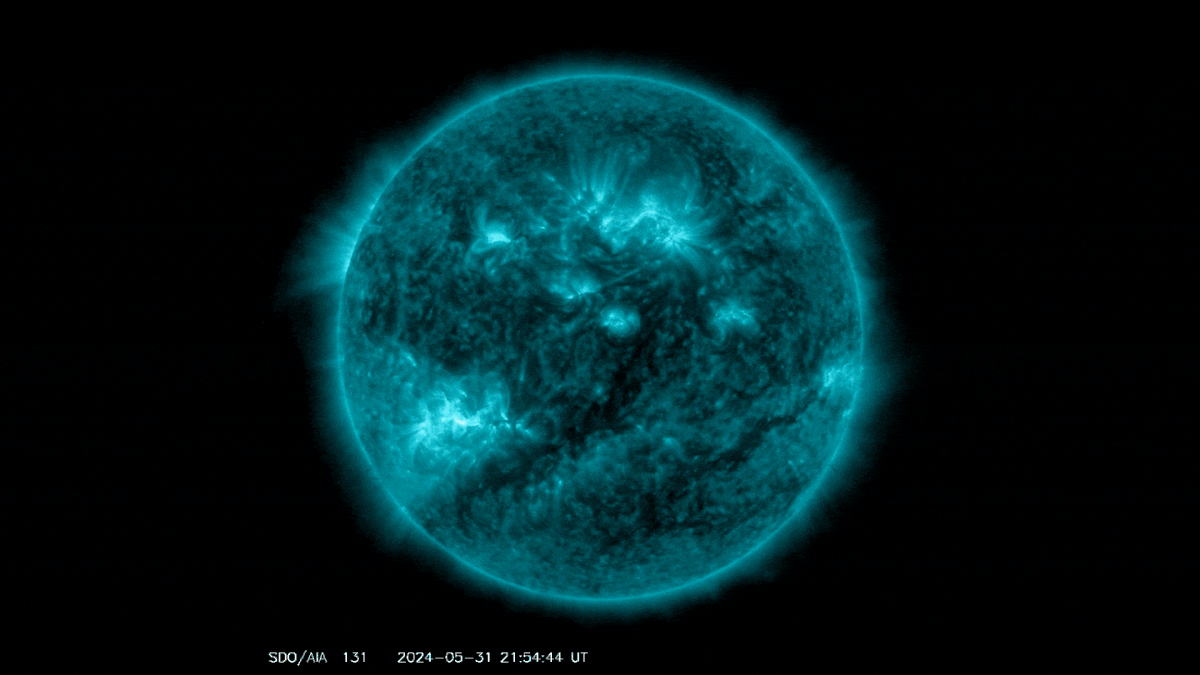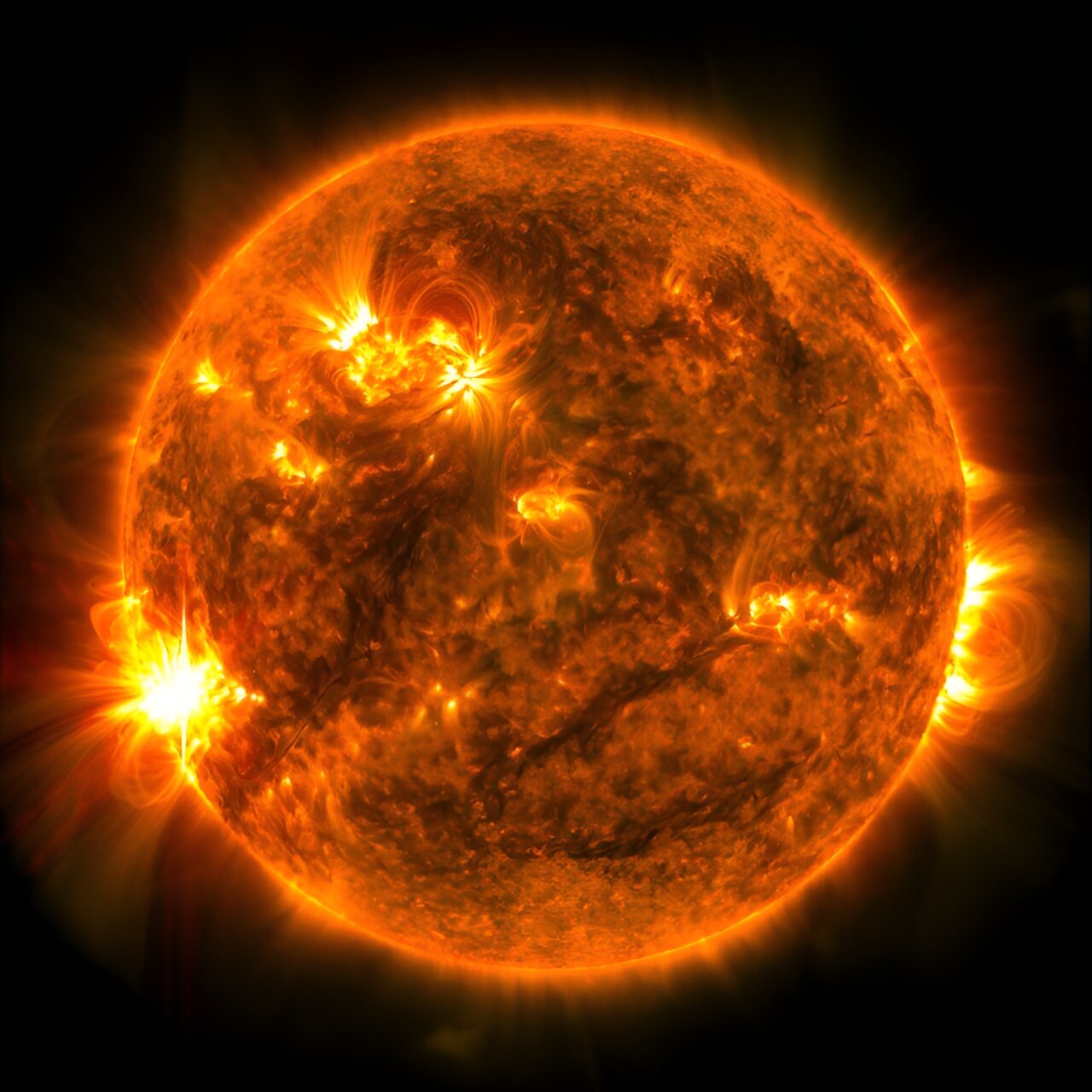
The sun has been active lately, with multiple solar flares erupting in the past week. On May 29, 2024, an X1.4 solar flare occurred at 10:37 a.m. ET.
This powerful burst of energy is classified as an X-class flare, which denotes the most intense flares.
NASA's Solar Dynamics Observatory captured images of the event, showing a bright flash on the sun's surface in extreme ultraviolet light. This subset highlights the extremely hot material in flares and is colorized in orange.
Solar flares can impact radio communications, electric power grids, navigation signals, and pose risks to spacecraft and astronauts.
Another solar flare occurred on June 3, 2024. This M-class solar flare appeared to be a 'failed eruption,' as much of the plasma plume didn't manage to escape the sun's grasp during the eruption.
The sun is nearing its solar maximum, which is expected this year. During this period, researchers have observed increasingly intense solar flares and coronal mass ejections (CMEs).
These CMEs can cause geomagnetic storms or major disturbances of Earth's magnetic field. The most recent significant event occurred on May 10, 2024, which was a historic one but fortunately didn't reach the level of the Carrington Event of 1859.
Governments have taken measures to mitigate the potentially negative impacts of solar storms. The May 10 storm was successfully mitigated and marked a significant achievement in space weather management.
The sun rotates on its axis once every 27 days, and scientists have learned about this by tracking sunspots. These dark regions are driven by the star's strong magnetic fields.
The large, complex clusters of sunspots on the sun's surface that drove increased solar activity in May have survived their rotation around the sun and are now returning to Earth's side. This could result in more auroras for northern and upper Midwest states from New York to Idaho.
Auroras, also known as the northern lights or aurora borealis, are caused by electrically charged particles interacting with gases in the atmosphere. They can be seen when solar activity is high and Earth's magnetic field is disturbed.



